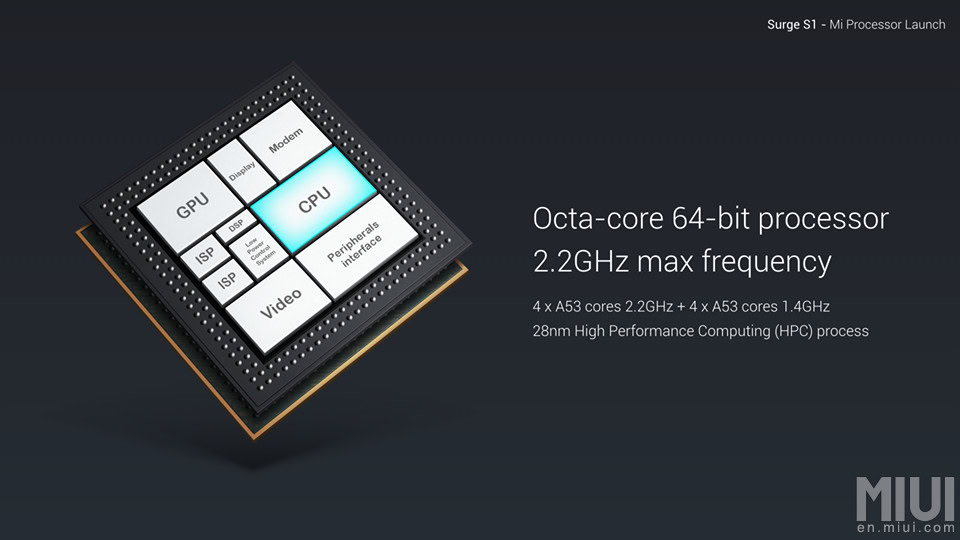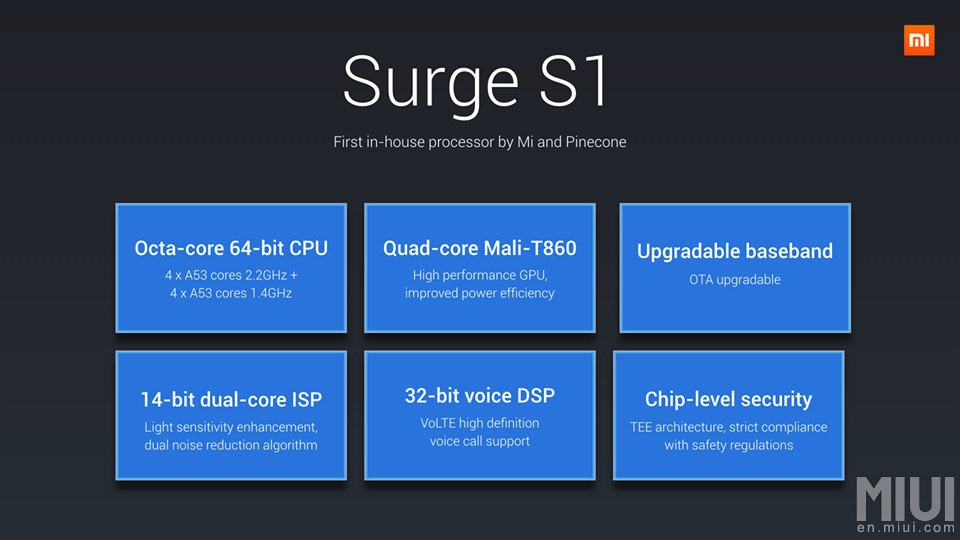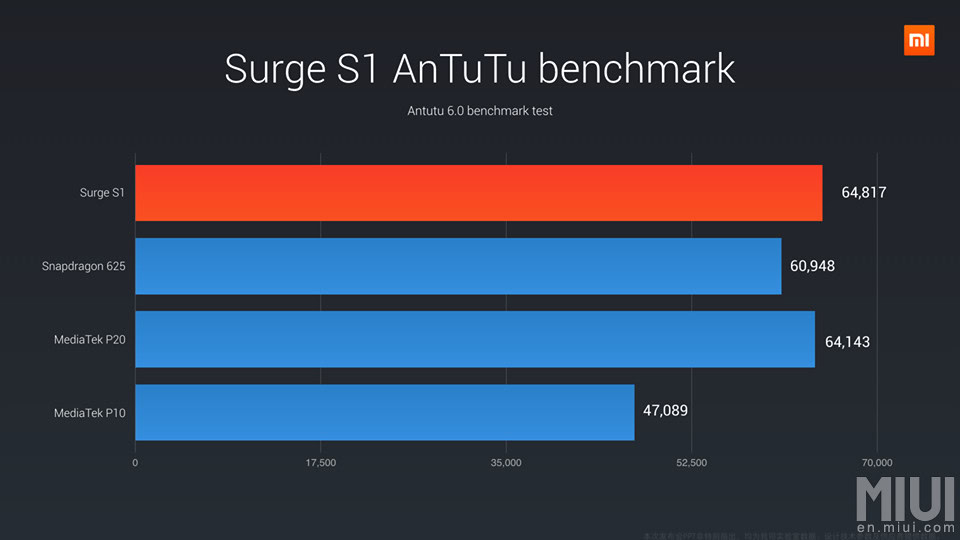Affiliate links on Android Authority may earn us a commission. Learn more.
Xiaomi reveals 64-bit Surge S1 chipset, its first-ever SoC

Xiaomi has announced the Surge S1, the company’s first ever processor, at an event in China. The company has been working on the chip for the past 28 months with Pinecone, a subsidiary Xiaomi launched to research and develop the processor, and it will launch with the upcoming Xiaomi Mi 5c (release date still to be confirmed). Find out all of the details below.
The Surge S1 is an octa-core SoC with four high-performance ARM Cortex A53 cores running at 2.2 GHz and four power-efficient ARM Cortex A53 at 1.4 GHz. These are optimized with ARM’s big.LITTLE processing tech to help deliver “peak-performance capacity, higher sustained performance, and increased parallel processing performance, at significantly lower average power.”
The Surge S1 uses TSMC’s 28nm HPc process technology, and implements a Mali T860 GPU (said to be 40% more power efficient than the previous-gen Mali-T760), and a 32-bit DSP, supporting VoLTE and 16 kHz sampling.

Xiaomi is also touting the benefits of the chip’s image signal processor (ISP) which it developed in-house. The 14-bit dual ISP is said to provide superior light sensitivity by up to 150 and a “dual noise reduction algorithm” to help produce better photos in low light.
Here are some of the Surge S1’s finer details as outlined by Xiaomi:
- Octa-core 64-bit chipset (4xA53 cores 2.2GHz + 4xA53 cores 1.4GHz)
- 28nm high-performance Computing (HPC) process
- Mali-T860 quad-core GPU
- AFBC + ASTC image compression technology
- 32-bit high-performance DSP for voice processing
- 14-bit dual ISP; enhanced image processing capabilities
- Surge ISP algorithm improves camera light sensitivity by 150%
- Dual noise reduction algorithm reduces noise and preserves image detail in low light
- Upgradable baseband; programmable modem, OTA upgradable
- VoLTE high-quality call and video support
- Chip-level security; TEE architecture, strict compliance with safety regulations
- Up to 4K@30fps video playback
- Video capture: 4K@30fps, 1080p@120fps, 720p@240/fps
- Codec support: H.265 /HEVC(Main profile), H.264 (Baseline/Main/High profile), MPEG4 (Simple profile/ASP),
- VC-1(Simple/Main/Advanced profile), and more
- Supports device displays up to 2560×1600 resolution
- Supports 9V2A fast charging

Xiaomi has become the fourth smartphone manufacturer in the world to build its own chips after Samsung, Apple and HUAWEI — currently the three largest global OEMs. This is a big step for the Chinese manufacturer and will have been a huge investment in resources for R&D, production, infrastructure etc.

Indeed, it will have been costly, but it stands to reduce expenditure going forward (Xiaomi no longer has to pay Qualcomm and MediaTek for their chips) and, crucially, allows Xiaomi to pursue a more holistic approach to its smartphone design and hardware integration. Xiaomi is now in the driving the seat as far as its chip development is concerned and it stands to help the company achieve higher-quality and more technically consistent products.
What are your thoughts on Xiaomi’s new chip? Let us know in the comments.